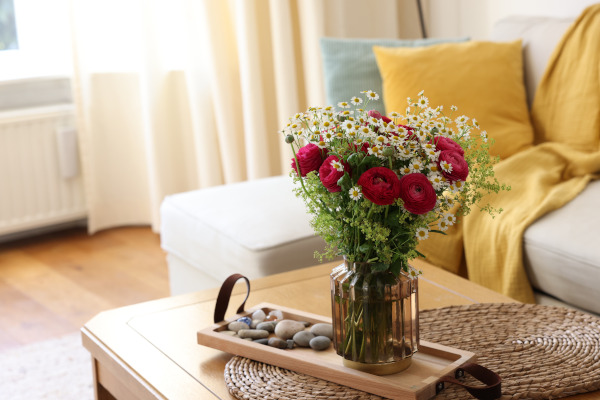How to grow Ranunculus
There are around 400 different species of ranunculus, and within these, several groups each with varying cultivation requirements. This growing guide focuses on tuberous ranunculus, of which the most widely grown is Ranunculus asiaticus, or Persian buttercup.
This species and its cultivars are adored by florists and flower arrangers for their delicate, often very double, rose-like blooms on thin, strong stems. They are quick and easy to grow, flowering approximately 90 days after planting.
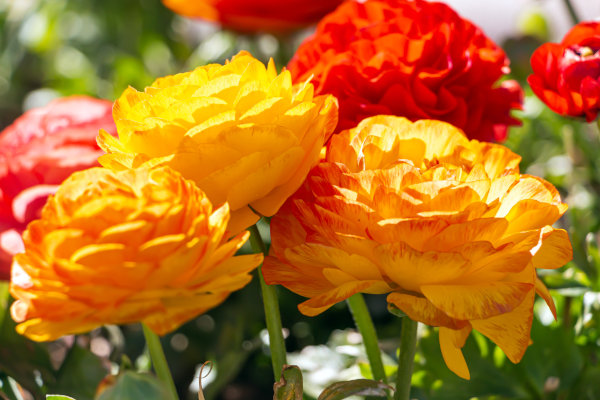
Zantedeschia is a genus of flowering plants from the family Araceae and is native to southern Africa. With a rich history dating back to the Ancient Romans, these deciduous or semi-evergreen perennials have been used as a symbol of celebration. Zantedeschia was Named after Professor Giovanni Zantedeschia, an Italian botanist.
There are two main forms of Zantedeschia: hardy and tender. Hardy forms of the plant can be grown outdoors, enjoy moist soil and full sun or partially shaded conditions - these are known as Arum lilies. Tender forms of Zantedeschia prefer being grown in containers or pots and should be brought inside over the winter - these are known as Calla lilies.
With tuberous flora in all colours from whites, yellows and oranges to deep reds and purples, Zantedeschias are not to be overlooked in any garden, as long as they have sufficient sunlight to grow in.
Ready to learn more about growing Zantedeschia? Read on for all there is to know...

Key Information
Soil pH
Position
Hardiness

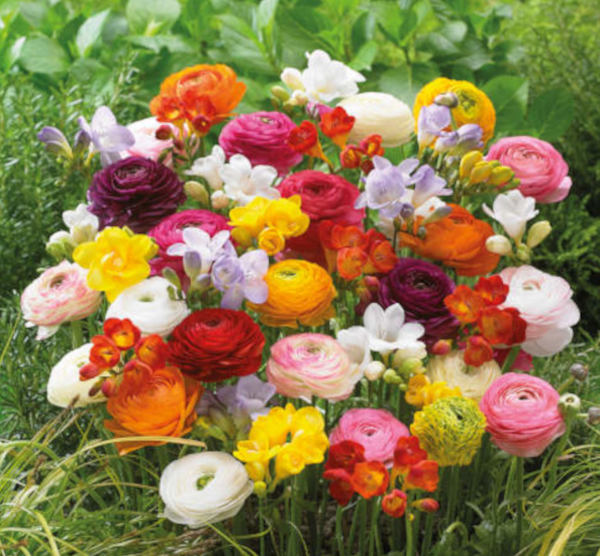
Where & when to plant Ranunculus
Position - Under cover: lots of light and good ventilation
Outdoors - Full sun
Soil - Moist and well-drained
Flowering Period - Spring
Hardiness - Mostly half-hardy i.e., will require winter protection in the UK
We sell our tuberous ranunculus both as ‘bulbs’ (though these are technically tubers), and potted plants in spring. For best results we recommend growing these early flowering plants in containers. These should be kept in an unheated greenhouse or conservatory until all risk of frost has passed, at which point they can either remain where they are or be moved outside.
How to plant Ranunculus
Bulbs/ tubers
- Soak for approximately three hours prior to planting.
- Choose an appropriate container. Ensure there are plenty of drainage holes in the bottom.
- Use a good quality potting compost with plenty of horticultural grit mixed in, and, if not already present in the compost (check the description on the bag) some slow-release fertiliser granules.
- Start by filling the pot with compost to about 10cm beneath the top of the pot.
- Plant tubers around 8cm apart, ‘eye’ up, ‘claws’ down (this will make sense when you see them).
- Cover the tubers with compost, leaving a gap of a couple of centimetres beneath the top of the pot. Firm down lightly with your hands.
- Pick up the pot (if you can!) and lightly tap on the potting bench or ground a few times to help further settle the compost around the plant.
- Soak well with water.
- A mulch with horticultural grit will look attractive and help to prevent a ‘cap’ or crust forming on the top of the compost (something container plants can suffer due to the artificial nature of their watering).
Potted plants
- Choose an appropriate container. Ensure there are plenty of drainage holes in the bottom.
- Use a good quality potting compost with plenty of horticultural grit mixed in, and, if not already present in the compost (check the description on the bag) some slow-release fertiliser granules.
- Start by partially filling the pot with compost; enough so that when placed on it the upper surface of the root balls are about 3cm lower than the top of the pot (cram as many plants into a pot as you can).
- Infill all the space surrounding the root balls with compost, firming down with your fingers then adding a little more so the plants are held tight.
- Pick up the pot (if you can!) and lightly tap on the potting bench or ground a few times to help further settle the compost around the plant.
- Soak well with water.
- A mulch with horticultural grit will look attractive and help to prevent a ‘cap’ or crust forming on the top of the compost (something container plants can suffer due to the artificial nature of their watering).
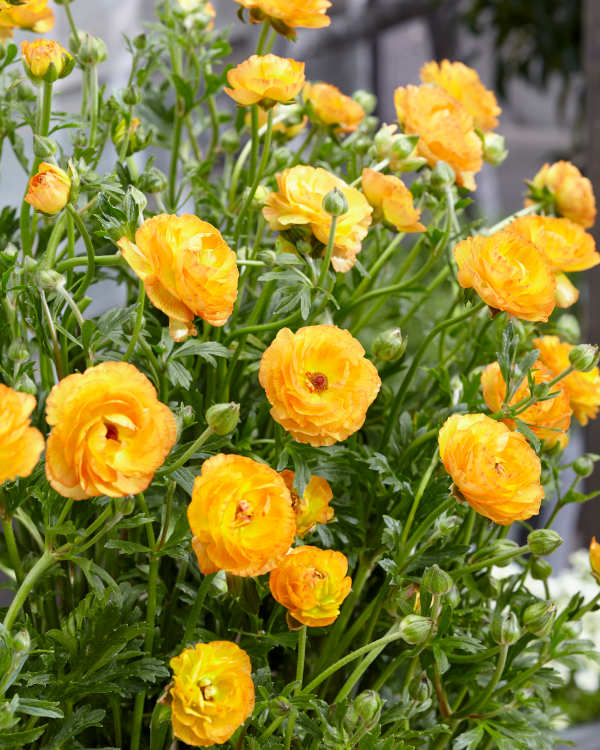
What to plant with Ranunculus
Combine with other ‘florist favourites’ for a ready supply of fresh cut flowers for the home. Think freesias, dahlias, alstroemerias, and peonies. What could be better?
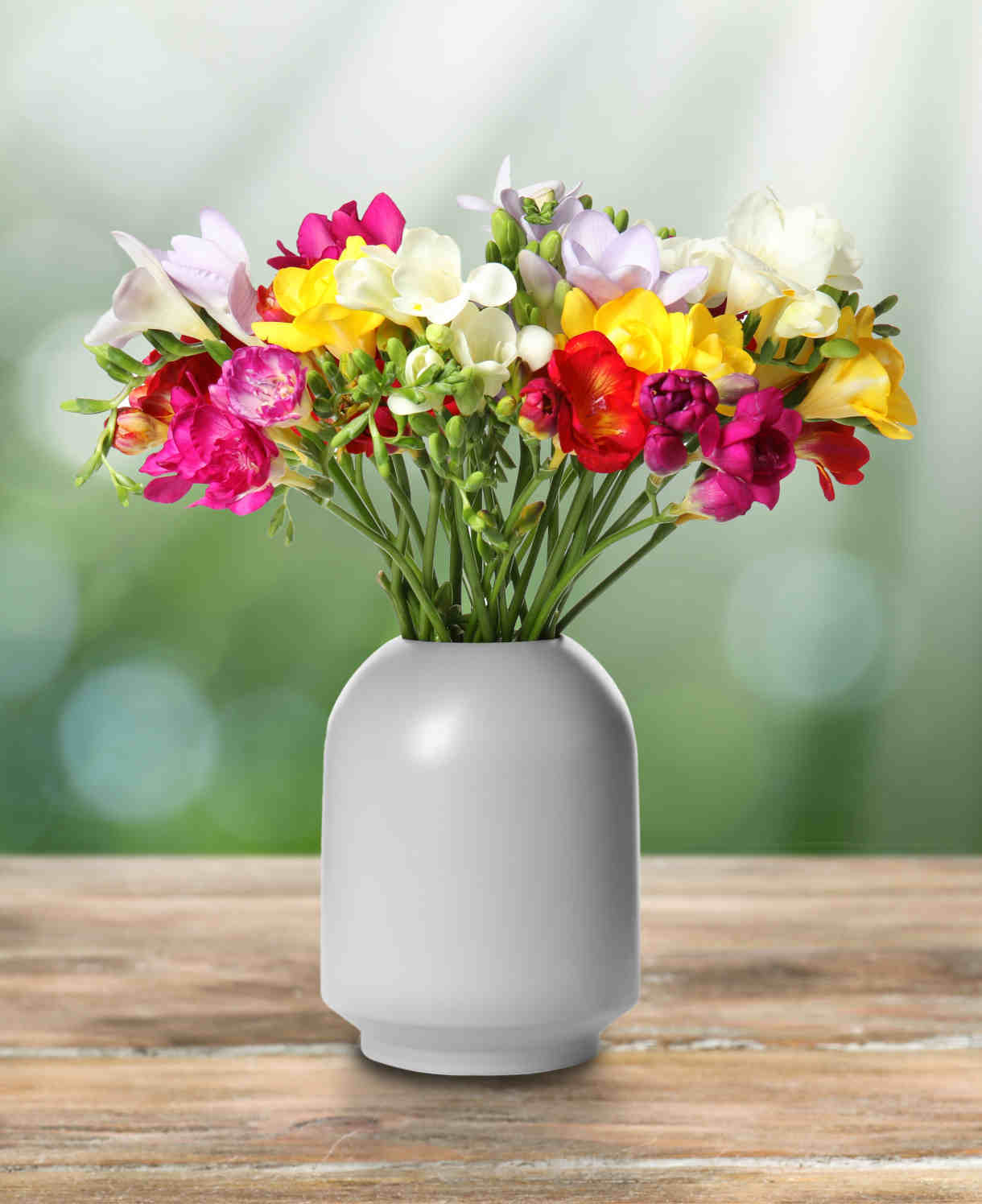
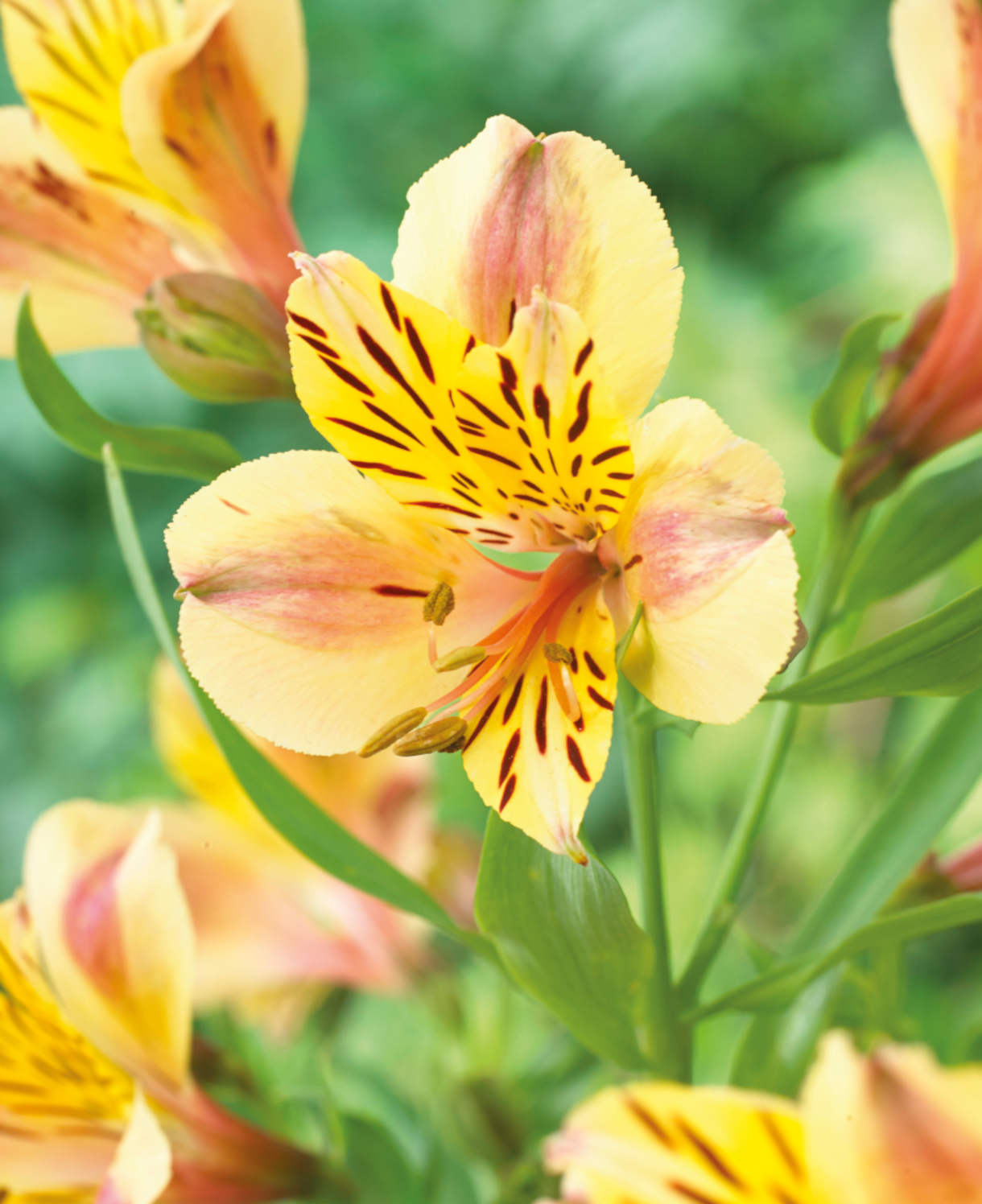
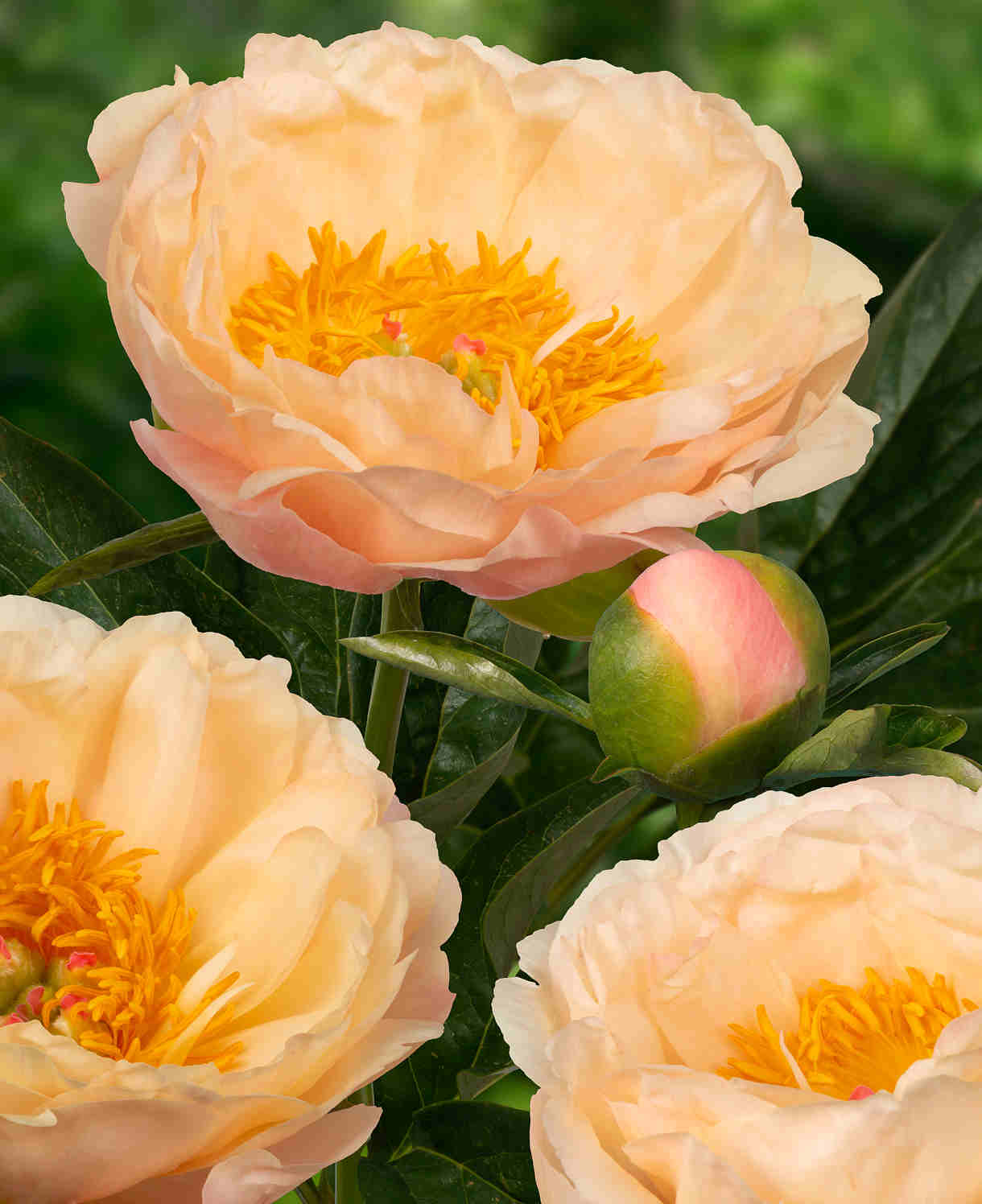
How to care for Ranunculus
Pruning and Deadheading
Deadheading or picking regularly will encourage further blooms. The more you pick the more they flower!
Allow foliage to die back completely before removing. This is required to feed energy back into tubers for the following year.
Watering
Containers of tuberous ranunculus will need watering regularly throughout the growing season. Allow the top few centimetres of compost to dry out between soakings.
These cool season flowers require a dry summer dormancy. Containers which were moved outside will need to return under cover, and watering should cease. Start to gently rehydrate in late winter.
Cold Protection
These half-hardy plants need to be overwintered in a cool, frost-free environment such as an unheated greenhouse or conservatory.
Alternatively, treat as annuals.
Pests and Diseases
Aphid can be something to look out for on tuberous ranunculus.
Outside, encouraging natural predators into the garden is the best bet, such as birds, ladybirds, and wasps. This can be done by making wildlife-friendly planting choices, avoiding the use of chemicals, and essentially allowing the garden to find its own, balanced ecosystem. In very pronounced infestations, regularly blasting aphids off with a garden hose or wiping away with a piece of kitchen paper can help to reduce their numbers.
Inside, the ‘wiping away’ approach is best, in addition to keeping your plants well fed, appropriately watered, and encouraging good air circulation. Healthy, unstressed plants are far less likely to succumb to pests and diseases.
How to propagate Ranunculus
Tuberous ranunculus can be propagated by division in early spring.
- Lift tubers as they come into growth.
- Using a sharp knife, cut into pieces, ensuring each has a growing tip and some roots.
- Pot up as in the ‘How to grow tuberous ranunculus’ section above.
Common Ranunculus questions
- Does tuberous ranunculus come back every year?
Yes, providing it has been kept in a dry, frost-free environment. - What month do you plant ranunculus bulbs?
We recommend starting them off in pots undercover as soon as they arrive in spring. These can either remain inside or move outdoors once all risk of frost has passed. - Should I soak ranunculus bulbs before planting?
Yes, we find soaking for three hours to speed up initial growth.
